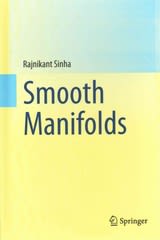Question
Crawling This study investigated whether babies take longer to learn to crawl in cold months when they are often bundled in clothes that restrict their

Crawling
This study investigated whether babies take longer to learn to crawl in cold months when they are often bundled in clothes that restrict their movement, than in warmer months. The study sought an association between babies' first crawling age and the average temperature (Fahrenheit) during the month they first try to crawl (about 6 months after birth). Parents brought their babies into the University of Denver Infant Study Center between 1988-1991 for the study. The parents reported the birth month and age at which their child was first able to creep or crawl a distance of four feet in one minute. Data were collected on 208 boys and 206 girls (40 pairs of which were twins).The Crawling.csv dataset can be downloaded from the Data Repository. The file contains summary data including the number of infants born during each month, the mean and standard deviation of their crawling ages, and the average monthly temperature six months after the birth month. Using this data, you will determine if there is a linear relationship between temperature and crawling age. Which of the following variables will be considered to be the predictor?
Group of answer choices
- Average temperature
- Averagecrawlingage
- Month of birth
- Season of birth
Question 22-Calculate the correlation between temperature and average crawling age. Round your answer to three decimal places.
Question 23-Describe the correlation between temperature and average crawling age.
Group of answer choices
- No correlation
- Positive
- Negative
- Non-linear
Question 24-What is thep-value for the correlation between temperature and average crawling age? Round your answer to three decimal places. If thep-value is less than 0.001, round to 0.001.
Question 25-Calculate the lower bound of the 95%CIfor the correlation between temperature and average crawling age. Round your answer to three decimal places.
Question 26-Calculate the upper bound of the 95%CIfor the correlation between temperature and average crawling age. Round your answer to three decimal places.
Question 27-Which of the following statements best describes the correlation between temperature and average crawling age?
Group of answer choices
- There was a statistically significant negative correlation betweentemperatureand average crawling age.
- There was NO statistically significant correlation betweentemperatureand average crawling age.
- Increased temperature causesignificantlyearlier average crawling ages.
- There was no relationship between temperature and average crawling age.
Question 28-Perform a simple linear regression using temperature to predict average crawling age. What is ther-square value of the regression model? Round your answer to three decimal places.
Question 29-What is the value of the constant for the linear regression predicting average crawling age using temperature? Round your answer to three decimal places.
Question 30-Which of the following statements best defines theconstantfor the linear regression using temperature to predict average crawling age?
Group of answer choices
- When temperature equals zero, the expected average crawling age will be 35.678.
- For every one unit increase in temperature, the average crawling age increases by 35.678.
- When temperature equals zero, the expected average crawling age will be 0.078.
- For every one unit increase in temperature, theaveragecrawlingage decreases by -0.078.
Question 31-What is the value of the slope for the linear regression predicting average crawling age usingtemperature? Round your answer to three decimal places.
Question 32-Which of the following is the correct Alternate hypothesis for the Hypothesis test of the slope?
Group of answer choices
- HA:? = 0
- HA:? ?0
- HA:? = 0
- HA:? = 0
Question 33-What is the value of the test statistictfor the hypothesis test of the slope? Round your answer to three decimal places.
Question 34-What is thep-value for the hypothesis test of the slope? Round your answer to to three decimal places. Ifp-value is less than 0.001, round to 0.001.
Question 35-What is the lower bound of the 95%CIof the temperature slope for the linear regression predicting average crawling age? Round your answer to three decimal places.
Question 36-What is the upper bound of the 95%CIof the temperature slope for the linear regression predicting average crawling age? Round your answer to three decimal places.
Question 37-What is the correct decision for the hypothesis test of the slope?
Group of answer choices
- Reject H0
- Fail to Reject H0
- Accept H0
- Accept HA
Question 38-Which of the following statements best summarises the findings of the linear regression between temperature and average crawling age?
Group of answer choices
Step by Step Solution
There are 3 Steps involved in it
Step: 1

Get Instant Access to Expert-Tailored Solutions
See step-by-step solutions with expert insights and AI powered tools for academic success
Step: 2

Step: 3

Ace Your Homework with AI
Get the answers you need in no time with our AI-driven, step-by-step assistance
Get Started



